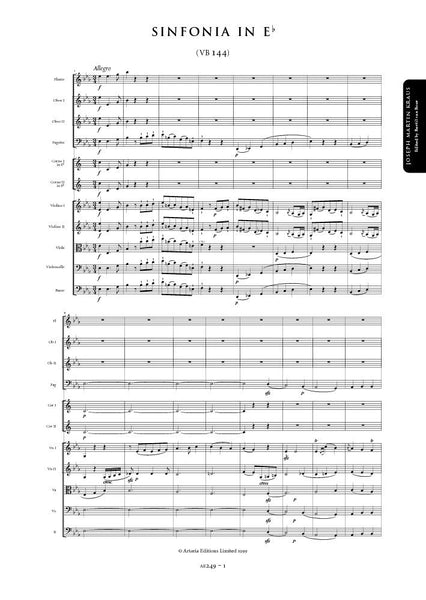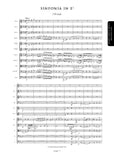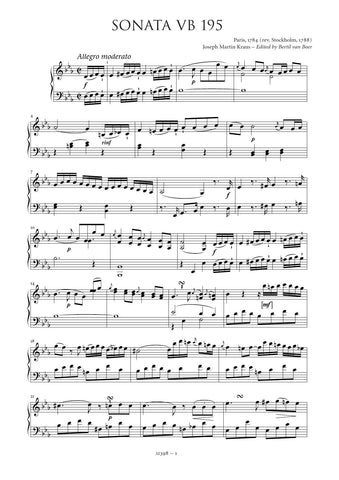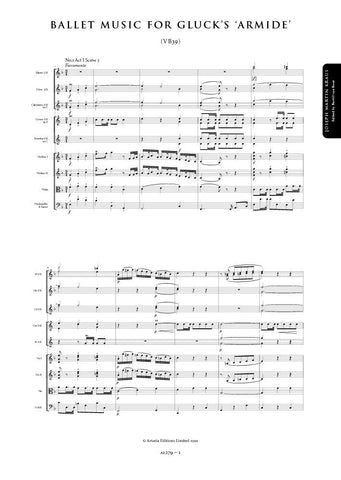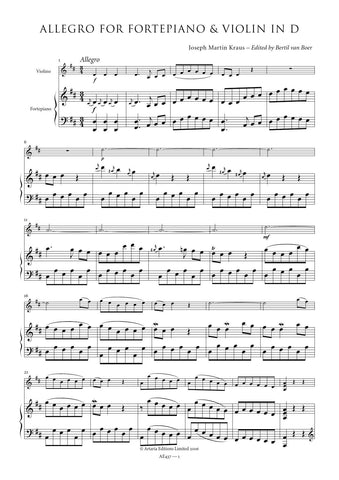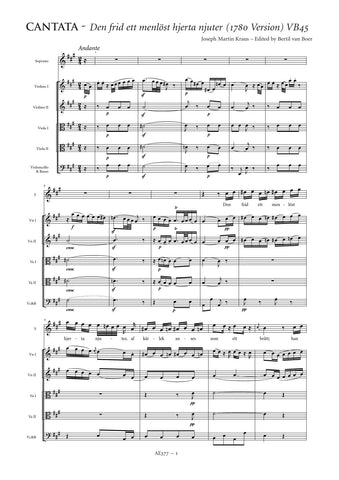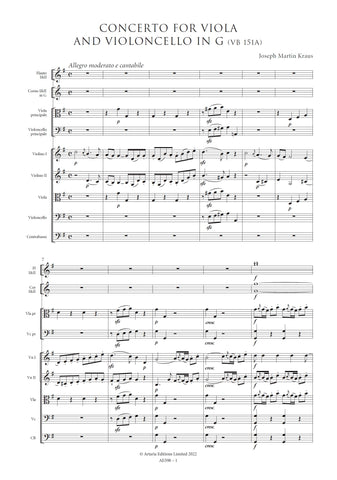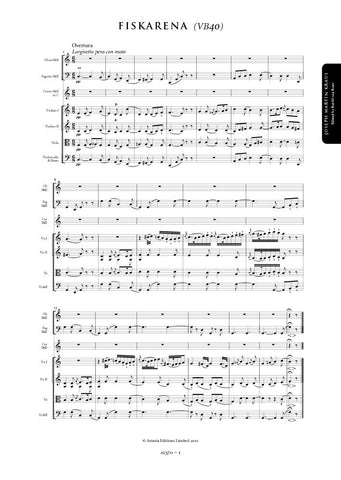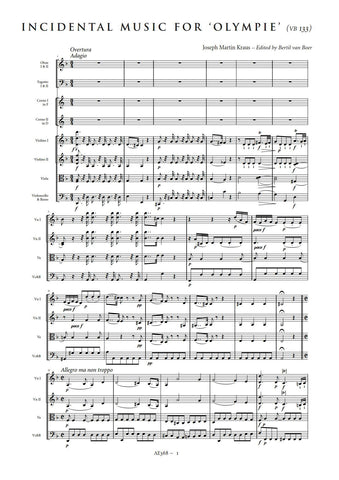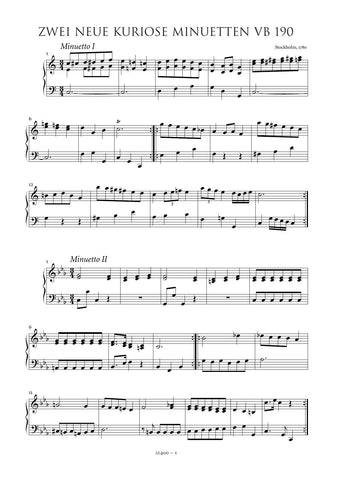Description |
Kraus, Joseph Martin (1756-1792)
|
||||||||||||||||||
Audio sample |
|||||||||||||||||||
Details |
The Symphony in E flat was composed according to watermark evidence in Rome in December of 1783, probably just prior to Kraus's brief visit to Naples beginning on the twenty-third of that month. Thus this bright and cheerful work can be considered his "Italian" symphony, written after he had come under the influence of Viennese composers such as Joseph Haydn and before his reimmersion into the dramatic world of France, the next stop on his grand tour. The actual reasons for its composition are not known, but it was about this time that he actively sought to distribute his more popular instrumental works through the Viennese copyhouse of Johann Traeg. Traeg had a large customer base, and it is clear from biographical evidence that Kraus attempted to take advantage of this, perhaps taking the advice he apparently received from Haydn to "scatter his works about here and there," as he noted in a letter to his parents from Esterhza in October of that year. He may also have intended to have the symphony performed at the Concerts Spirituels and perhaps published in Paris. Kraus's biographer Fredrik Silverstolpe noted the existence of a brief correspondence between the composer and Traeg, beginning in July of 1785. Unfortunately, none of these letters survives, but it can be suggested, based upon the appearance of this work (along with the Symphony in C minor VB 142) in the Viennese newspapers as for sale in 1785, that both were sent to Vienna in fulfillment of some agreement made while Kraus was visiting there over a year earlier. That Kraus's contact with Traeg resulted in some success in terms of the distribution of his music can be seen in the several sets of manuscript parts currently found in the Czech Republic, Germany, Austria and Italy, all regions of the former Holy Roman Empire. It is apparent, however, that the Viennese publisher did not think the original slow movement, a sombre siciliano, was appropriate for his potential buyers, and it is likely that he asked Kraus to replace it with another, more up to date one in the Viennese style. All of the Traeg copies contain this alternative second movement. For this edition, both have been included, leaving it to the performer's discretion as to how Italian or how Viennese Classical one wishes to be. The edition is based upon Kraus's complete autograph, now in the Statensmusiksamlingar, Royal Opera Library under signature Div[erse] Part[itur] 40. The alternative second movement has been based upon a set of parts derived from Traeg's copy house, now in the University Library in Uppsala, Signature Capsula 70. These have been corroborated with additional sets in Regensburg (Thurn und Taxis Hofbibliothek Kraus 2) and Modena (Biblioteca Estense D 224). In keeping with Kraus's usual modus operandi, the autograph score is unusually precise in its calligraphy, with all dynamics, articulations, and markings carefully, even painstakingly noted. This edition retains all of these as Kraus notated them, even where some inconsistencies or oddities occur. For example, in bar 60 of the first movement, there is a rhythmic difference between the first notes of the flutes/horns and the bassoon/first violin/lower strings; the former have a halfnote while the latter a quarter. The composer clear wishes the harmonic foundation in the winds to provide continuity into the next phrase, while the other instruments complete the cadence. Also, since the second violins have a diminuendo accompaniment pattern, the textural reduction to softer instruments reinforces the dynamic change. The same sort of thing occurs in bar sixteen of the original second movement, where the bass carries on the tonic with a dotted quarter instead of the other instruments' quarter note. There are only a few instances where actual slurring, dynamics, or ornaments seem to have been left out as an oversight; these have been tacitly corrected or are found in parentheses. However, specific dynamic markings that vary between the instruments, such as in the original second movement at bar six, have been retained. Bertil van Boer |
||||||||||||||||||
Performance |
19 November 2009 18 November 2009 Conductor: Wolfgang Hentrich Fördervereinsorchester der Philharmonie Dresdenr Schloss Albrechtsburg - Dresden - Germany ______________________________ 18 October 2009 Conductor: Kammerorchester Plochingen Conductor: Bertram Schade Stadthalle - Plochingen - Germany ______________________________ 4 June 2006 Conductor: Claudia Simpson-Jones Olympia Chamber Orchestra Washington Center for the performing Arts - Olympia, WA - USA |
||||||||||||||||||
Score Preview (best viewed in full screen mode) |
|||||||||||||||||||
Loading...
Error




